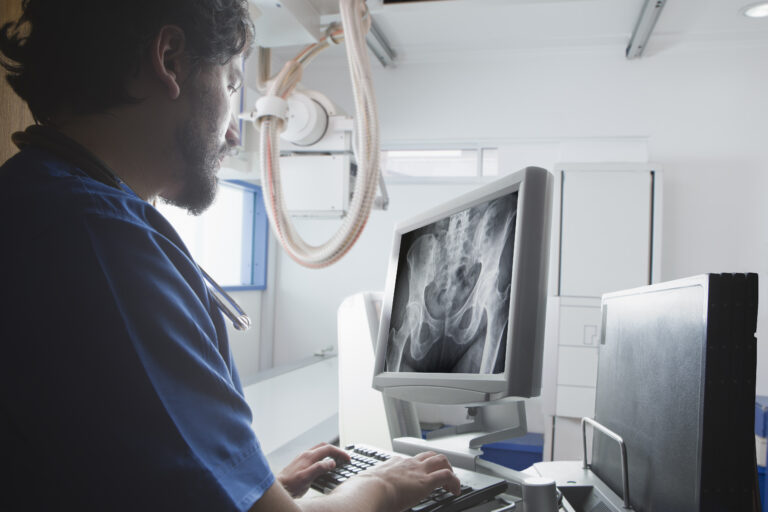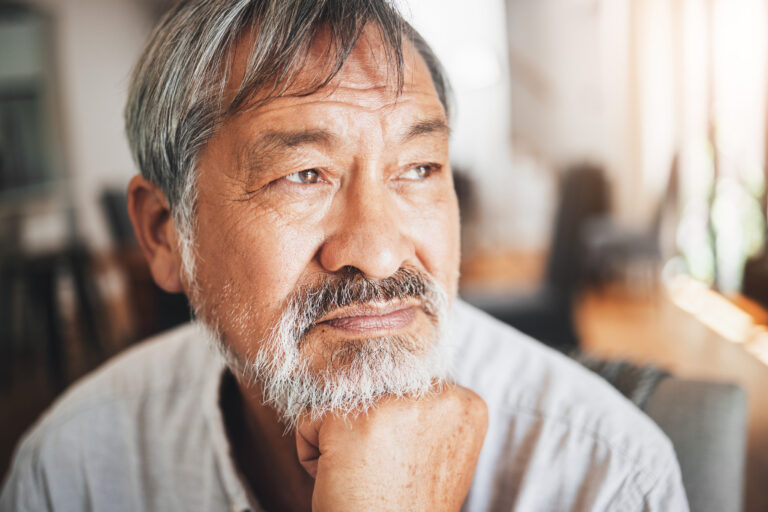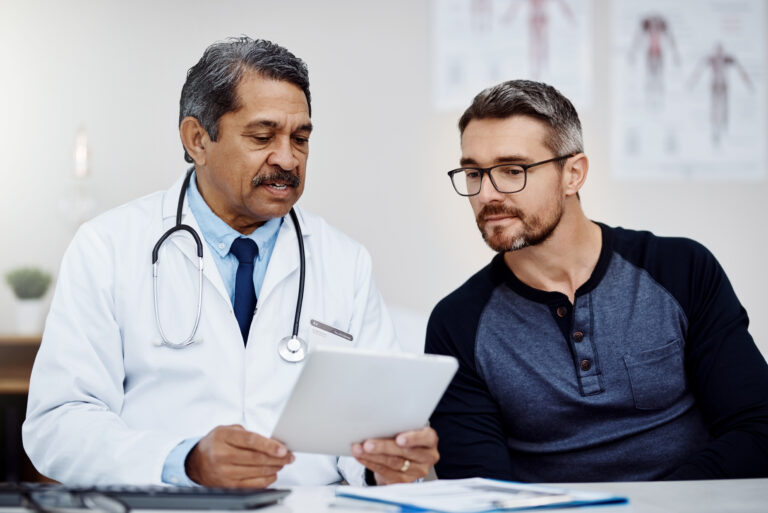Preventing and Managing Lymphedema After Prostate Cancer Treatment
By Ephram Smith
If you have been treated for prostate cancer, you might notice swelling in your legs or groin area. This swelling is called lymphedema (lim-foh-DEE-ma). Lymphedema can happen after certain prostate cancer treatments, especially pelvic lymph node dissection (lymph node removal surgery) or radiation therapy to the pelvis. In this post, we will explain how and why lymphedema happens, the common signs to watch for, and practical ways to prevent and manage this swelling. The information comes from a patient advocacy perspective, with simple tips learned from years of helping men with prostate cancer. Our goal is to help you take charge of your health with easy daily habits and solutions for leg and groin swelling.
Why Does Prostate Cancer Treatment Cause Lymphedema?
Lymph nodes are small bean-shaped glands that help your body drain fluid and fight infection. You have many lymph nodes in your pelvis (lower belly/groin area). During prostate cancer surgery, doctors often remove some pelvic lymph nodes to check for cancer. Radiation treatment to the pelvic area can also damage lymph nodes. Losing or injuring these lymph nodes makes it harder for lymph fluid to drain properly (mskcc.orgprostatecancer.net). When lymph fluid can’t flow out normally, it builds up like water behind a dam, causing swelling in nearby tissues (mskcc.org).
For men with prostate cancer, lymphedema usually affects the legs (one or both) and sometimes the lower belly or genital area (penis or scrotum) (cancerresearchuk.org). This is because the pelvic lymph nodes help drain fluid from the legs and groin. If many lymph nodes are removed or damaged, the risk of lymphedema is higher. For example, extended lymph node removal (including nodes in the groin) or having radiation plus surgery can increase your chances of swelling. On the other hand, removing only a few lymph nodes in the pelvis carries a smaller risk
When can lymphedema happen? It can occur soon after surgery or radiation, or it might not appear until months or even years later. There’s no perfect way to predict who will get lymphedema. Some men never develop it, while others might notice swelling long after treatment is over. This is why it’s important to always be aware of the signs and take steps to lower your risk.
Common Signs and Symptoms of Lymphedema
Lymphedema usually builds up slowly. Early on, you might just feel a slight heaviness or tightness in your leg. Over time, you may see visible swelling. Here are some common signs and symptoms to watch for:
- Swelling in the leg or foot: One leg might look larger than the other, especially in the ankle or calf. Shoes or pants may feel tighter on that side. Some men also experience swelling in the groin, scrotum, or lower stomach if those areas are affected (cancerresearchuk.org).
- Heaviness or fullness: The leg with lymphedema can feel heavy, stiff, or full of fluid. It may be harder to bend your knee or move like usual (prostatecancer.net). You might feel achy or get tired in that limb more quickly.
- Tight skin or less flexibility: The skin might feel tight or hard when swelling is present (rogelcancercenter.org). If you press on the swollen area with your thumb, you may leave a dent (this is called “pitting” early on) (rogelcancercenter.org). You might notice you can’t see wrinkles or veins as well as before because the skin is stretched (rogelcancercenter.org).
- Clothing or jewelry imprinting the skin: Socks with elastic, shoes, or underwear might leave deep marks on the swollen leg or groin. A sock that used to fit may leave an indent on your calf now. This is a clue that fluid is not draining properly.
- Skin changes: The skin on the leg can become dry or slightly thicker over time. Sometimes it may look red or feel warm, especially if an infection is starting (cancer.gov). Itching or a tingling sensation in the leg or toes can also happen.
Pay attention to any new swelling or difference in how your legs feel. Lymphedema is easier to manage if caught early (cancerresearchuk.org). If you notice symptoms, inform your doctor promptly. Also, watch for signs of infection in the swollen area: redness, warmth, pain, or fever. These could mean cellulitis, a skin infection that needs quick treatment. Always call your doctor if the swollen area becomes red, hot, or very tender, or if you develop a fever (cancer.gov). Early treatment of infection is important to prevent lymphedema from getting worse.
Daily Habits to Reduce Your Risk of Lymphedema
There is no guaranteed way to prevent lymphedema, but you can do a lot of simple things to lower your risk or delay its onset (mskcc.org). As someone who has supported many prostate cancer survivors, I recommend the following daily habits. These tips help keep fluid moving and protect your legs from injury or strain:
- Protect your skin from cuts and infections: Take good care of the skin on your legs and feet. Use lotion to keep your skin moisturized so it doesn’t crack. Be careful when shaving; consider using an electric razor to avoid nicks. Wear long pants, socks, or gloves as needed to avoid scratches or bug bites when doing yard work or activities (cancer.org). Even small cuts can lead to infection and trigger swelling, so treat any cut or scrape right away (clean it and apply antibacterial ointment). If you notice signs of infection (redness, warmth, increased swelling), contact your healthcare provider promptly (mskcc.org).
- Avoid tight clothing or pressure on your legs: Do not wear items that squeeze your legs or groin too tightly. Tight socks with elastic bands, snug waistbands, or underwear that leaves red marks are not good because they can act like a tourniquet and block lymph flow. Wear loose, comfortable clothes that do not leave deep marks on your skin (mskcc.org). If you have long flights or car rides, take breaks to move around and avoid anything that constricts your legs (even long sitting can create pressure). Also, do not cross your legs when sitting, as this can slow fluid flow in the lower body (cancer.org).
- Stay active and exercise regularly: Gentle exercise is one of the best ways to help your body pump lymph fluid. When your muscles move, they push the fluid through the lymph vessels. Try to incorporate some physical activity every day (cancer.govrogelcancercenter.org). This can be as simple as walking around the house or doing light leg exercises. Avoid sitting or lying down for long stretches—get up at least once every hour to stretch or walk a bitt. If you work at a desk, take short walking breaks. If you travel on an airplane, stand up and move your legs occasionally. Swimming and light aerobic exercises are also great because water pressure and muscle movement help lymph flow. Always start slowly and talk to your doctor about what exercises are safe for you, especially if you are recovering from surgery (rogelcancercenter.org). The key is to keep the blood and lymph moving.
- Maintain a healthy weight: Extra body weight can put more pressure on your lymphatic system. Men who gain a lot of weight after treatment have a higher chance of lymphedema (mskcc.org). Eating a balanced diet and staying at a healthy weight is good for overall health and can reduce stress on lymph drainage (rogelcancercenter.org). If you need help with weight control, ask your doctor or a dietitian for guidance. Even small changes like regular walks and portion control in meals can make a difference over time.
- Stay hydrated and watch your salt intake: Drink plenty of water during the day. Staying hydrated helps your body circulate fluids and can actually reduce swelling (cancer.gov). In contrast, eating too much salt can make your body hold onto water and worsen swelling (cancer.gov). Try to limit salty foods (like fast food, chips, and processed meals) to keep fluid balance in check. Choose fresh foods when possible and flavor with herbs instead of extra salt. This healthy habit will benefit your lymph system and your heart.
- Avoid extreme heat (and cold): High heat can cause blood vessels to expand and lead to more swelling in the legs. It’s best to avoid things like hot tubs, very hot showers, or saunas if you are at risk of lymphedema. Even sitting too close to a heater or sunbathing on a hot day could trigger swelling. Keep cool and wear sunscreen to prevent sunburn, because burns can draw fluid to the skin and cause swelling (cancer.org). Very cold temperatures might also slow circulation, so dress warmly (but not tightly) in winter. Overall, try to keep your body in comfortable temperatures and avoid sudden extremes (mskcc.org).
- Plan for long trips or inactivity: If you know you’ll be less active (for example, during a long flight, car ride, or if you have to be on bed rest), take steps to help your circulation. During travel, stand up and stretch your legs every so often. On a plane, you can do simple foot pumps (moving your feet up and down) while seated to encourage flow. If you must stay in bed or sit for a long time, periodically elevate your legs on a pillow to let gravity help drain fluid. Also do gentle ankle rolls or bend your knees from time to time. These little movements can prevent fluid from pooling in your feet.
By following these daily habits, you give yourself the best chance to avoid lymphedema or catch it early. Many of these tips are healthy for you regardless, and they can become a normal part of your routine. Remember, not every prostate cancer survivor gets lymphedema, and doing these things does not mean you definitely won’t get it. However, they stack the odds in your favor by keeping your lymph system as healthy as possible (mskcc.org). It’s all about taking good care of your body after treatment.
Managing Lymphedema if It Occurs
Sometimes, even if you do everything right, lymphedema can still happen. The good news is that it can be managed. With the right care, men with lymphedema can control the swelling and continue their daily activities. The sooner you address the swelling, the better the results (cancerresearchuk.org). Here are some effective strategies for managing lymphedema in the legs and groin:
- Get a proper diagnosis and care plan: If you notice swelling, talk to your doctor. They might refer you to a lymphedema specialist or physical therapist. A specialist can measure your swelling and make a plan with you. This might include exercises, special massage techniques, and compression therapy. Early intervention is key, so don’t wait – get it checked. Knowing for sure that it’s lymphedema (and not another issue like a blood clot) will also give you peace of mind and direction for treatment (cancerresearchuk.org).
- Use compression garments as directed: One of the main treatments for lymphedema is wearing a compression garment on the affected limb. For leg lymphedema, this is usually a fitted elastic stocking or sleeve that applies gentle pressure on your leg. It helps push the lymph fluid upward, preventing it from pooling in the lower leg (mskcc.org). You will need to be measured for the right size by a professional. Wear your compression stockings or wraps exactly as instructed – typically during the day when you are up and active (cancer.gov). Some people also have compression sleeves or special shorts for groin or lower belly swelling. These garments should be firm but not painfully tight. They are different from regular tight clothing because they are designed to apply pressure evenly in a way that helps fluid flow (cancer.org). If your garment feels too loose or too tight, tell your provider so you can get re-fitted. As your swelling changes, you may need new sizes. Compression garments can greatly reduce swelling and discomfort when used consistently.
- Elevate the leg and get moving: If you have swelling in your leg, elevate it whenever you can. For example, when you are sitting or lying down, prop your leg up on a pillow so that your foot is higher than your heart (cancer.gov). This helps drain fluid out of the leg. Many men find that elevating the leg at night or during rest breaks in the day makes the leg feel better. Along with elevation, continue to do gentle exercises daily. Even if your leg is swollen, moving it will help pump out some fluid (cancer.gov). Simple walking, light stretching, or approved exercises from your therapist will keep things flowing. Avoid standing or sitting in one position for too long; change positions often to encourage circulation. The combination of compression + elevation + exercise is very powerful in managing lymphedema. For example, one man I worked with, Jim, developed swelling in his left leg after lymph node surgery. He wore his compression sock, took short walks every day, and put his leg up each evening. After a few weeks, his swelling went down significantly and he felt more confident staying active. It showed him that these small daily actions really do work.
- Practice good skin care on the swollen area: Continue to protect your skin when you have lymphedema, just as in the prevention tips. In fact, skin care becomes even more important now. Keep the skin clean and moisturized to prevent cracking. Check your feet and leg daily for any cuts, scratches, or signs of rash/infection. With the reduced lymph drainage, your leg is at higher risk for infections because your immune cells may not get there as quicklyc. Treat even minor skin problems promptly (clean and cover any break in the skin). Avoid things that could further irritate the skin: very hot water, harsh soaps, or walking barefoot outside where you could get cuts. Also, protect your feet from athlete’s foot (a fungal infection) by keeping them dry and wearing flip-flops in public showers – foot fungus can also lead to bigger skin infection in a leg with lymphedema. By babying your skin, you prevent complications that could worsen the swelling.
- Manual lymphatic drainage (special massage): A trained lymphedema therapist can perform manual lymphatic drainage (MLD), which is a gentle massage technique that helps move lymph fluid out of the swollen area (cancer.org). They use light strokes to guide fluid toward healthy lymph nodes. You can also be taught to do a simplified version of this massage on yourself once you learn the technique (cancer.org). Many men find that regular MLD sessions reduce the feeling of heaviness and soften the swollen tissue. It’s a relaxing therapy and can be done a few times a week as needed. Make sure this is done by someone trained in lymphedema care – a standard deep tissue massage is not the same and could be too rough. Always get clearance from your doctor before getting any massage on a swollen area.
- Keep up a healthy lifestyle: Managing lymphedema is an ongoing process, and a healthy lifestyle will make it easier. Continue to exercise regularly as you are able – your therapist might give you specific exercises that target lymph flow. Activities like swimming, light cycling, or yoga can be beneficial, but always follow your medical team’s advice. Nutrition matters too: eating plenty of fruits, vegetables, lean protein, and whole grains will support your overall health and weight management, which in turn helps with swelling (rogelcancercenter.org). There’s no special “lymphedema diet,” but focusing on anti-inflammatory foods (like fish, leafy greens, nuts) and keeping junk food low can help your body feel its best. Also, remember to stay hydrated by drinking water throughout the day (cancer.gov). Some men worry that drinking water will worsen swelling, but that’s not true – dehydration can actually make your body hold onto fluid. Drinking water helps your kidneys and lymph system flush out excess fluid.
- Avoid further trauma or strain to the area: Once you have lymphedema, you want to avoid anything that could exacerbate it. That includes many of the precautions we discussed: no tight clothes on that leg, no extreme heat (like heating pads on the leg), and no heavy lifting or straining that involves that leg without guidance. If you normally get blood drawn or shots in your legs (which is uncommon), ask to use your arm instead (prostatecancer.net). Basically, treat the affected limb gently. Some doctors also advise avoiding repetitive pounding activities on a hard surface (like running on concrete) if it causes your leg to ache or swell more – opt for lower-impact exercise like walking on grass or using a stationary bike. Pay attention to your body’s signals. If an activity makes your swelling noticeably worse, scale back and discuss with your therapist or doctor on how to approach it safely (rogelcancercenter.org).
- Follow up regularly with your healthcare team: Lymphedema is a chronic condition, meaning it can persist over time. That doesn’t mean it will always stay severe – many patients successfully keep it under control. It’s important to have periodic check-ins with your doctor or lymphedema therapist. They can monitor the swelling, adjust your compression garment if needed, and update your care plan. Sometimes, despite best efforts, lymphedema can progress. In more severe cases, medical treatments like pneumatic compression pumps (a machine that periodically squeezes the limb to move fluid) (prostatecancer.net) or even specialized surgeries (to reconnect lymph channels or transplant lymph nodes) are available. These are usually considered if conservative measures aren’t enough, and they would be done by specialists (my.clevelandclinic.org). Most men with prostate cancer-related lymphedema won’t need surgery, but it’s good to know that options exist if your case is very challenging. Your main partners will be your doctor and therapists, who will guide you through managing this condition step by step.
Real-world reassurance: Many men have successfully managed lymphedema and continued living active lives. It can be frustrating to deal with swelling on top of everything else, but with patience and care, it usually gets better or stabilizes. For example, I knew a gentleman who loved golfing. After radiation therapy, he developed mild lymphedema in one leg. At first, he was worried he’d have to give up golf. But by using a compression stocking and doing leg exercises, he was able to keep the swelling down. He also used a cart on the golf course instead of walking the whole way. He still enjoys his games, and his lymphedema stays under control. This shows that you can continue doing the things you love by managing lymphedema smartly.
Staying Empowered and Healthy
Lymphedema related to prostate cancer treatment is a side effect that you can prepare for and manage with knowledge and daily care. The key points to remember are: protect your skin, stay active but avoid strain, wear compression if needed, and pay attention to any changes. By catching symptoms early and following healthy habits, you give yourself the best chance to minimize swelling. Always communicate with your healthcare team about what you’re experiencing – they can offer treatments like therapy, compression fittings, and guidance specific to your situation.
While lymphedema can be an ongoing issue, it does not have to control your life. You can still do many of your normal activities. It might mean you put on a compression sock each morning or take an extra walking break during a long flight, but these adjustments will help you feel better. Take it one day at a time. Some days the swelling might be more, some days less. Stick with your routine and don’t get discouraged. Many men find that lymphedema becomes just another manageable part of their post-cancer life.
In conclusion, leg and groin swelling after prostate cancer treatment is something to be aware of, but also something you can handle. By understanding why it happens and using the prevention and management tips in this guide, you can reduce your risk and deal with swelling effectively if it occurs. Always reach out for help if you need it – patient support groups and lymphedema specialists can offer valuable advice and moral support. You are not alone in this, and with the right care, you can keep lymphedema in check and continue enjoying your daily life.







